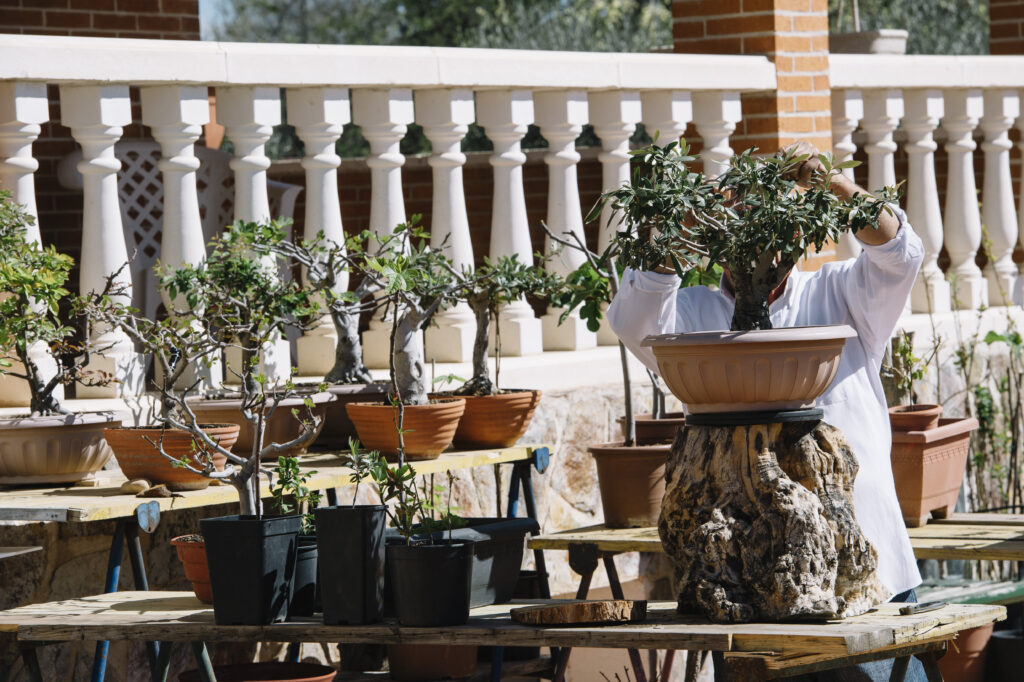Terrace Garden Setup: A Step-by-Step Guide
Creating a lush terrace garden is easier than you might think, but it does take planning. In this article, you will get to know the best way of terrace garden setup, from emptying that dusty terrace to enjoying a green oasis. At The Greenish Affair (an award‑winning urban landscape studio), we walk through each step as if it were our rooftop garden. We’ll share the common pain points (like leaking roofs or too little sun) and how to solve them. Along the way, we’ll also point out how our team can help, from terrace design to delivery, and mention our other services like balcony garden to Farmhouse landscaping. If you’d rather skip the headaches, The Greenish Affair can do the heavy lifting (literally!) and guide the whole terrace garden setup from start to finish.
1. Clear and Assess Your Terrace
Many home terrace gardens double as junk storage, so the first task is clearing clutter. Pack away or toss old furniture, boxes, and scrap, you need space. At the same time, you must assess the roof’s strength. A lot of people worry their terrace might collapse under heavy soil and planters (rightly so): wet potting mix is surprisingly heavy. We always calculate the total load before planting, because “the terrace must be able to handle the weight of soil, pots, and water”. In practice, we:
- Clean the deck: Remove stored items and sweep everything clear.
- Check weight capacity: Estimate how much soil and plants will weigh. If the building is old or shows cracks, get a structural engineer. (At The Greenish Affair we only plant on sturdy, load‑bearing terraces.)
- Waterproof the roof: Lay a quality membrane or sealant so rain won’t leak inside. No one wants drips in the ceiling.
- Ensure drainage: Make sure gutters or drains aren’t blocked. We often elevate pots on bricks so excess water can escape, preventing waterlogging.
2. Plan the Layout and Sunlight Exposure
One common people do while doing terrace garden setup is ignoring the sun. People often plop plants in the shadiest corner and wonder why nothing grows. First, get to know your terrace’s sunlight pattern on a sunny day: where do the sunbeams fall in the morning, noon, and afternoon? Most veggies and flowers need about 2 to 4 hours of direct sun, so mark those sunny spots. Once you know that, you can sketch a layout: where will planters sit, where will you walk, and where will you relax?
For example, we might place a seating area under some shade and surround it with potted plants along the edges. Key points we follow:
- Map sun vs shade: Note sunny vs shady zones. South-facing terrace gardens usually get the most light.
- Design paths & seating: Leave clear walkways and a spot to sit or work. You could, for example, run benches along one side and planters on the other. A fixed barrier of tall, colorful plants at the terrace edge can also block harsh wind.
- Group by light needs: Put sun-loving plants in the brightest spots, shade-tolerant ones where light is weak.
By planning carefully for your terrace garden setup, you can avoid the pain of having to move heavy pots later when a plant isn’t happy in the spot you first chose. At The Greenish Affair, we draw this layout in advance so clients know exactly where everything goes.
3. Choose Containers and Soil Mix
Another headache people face is the wrong planters or soil. Too-small pots dry out quickly; pots without holes drown plants in the rain. Too much clayey soil becomes rock-hard and roots suffocate. We always pick containers with drainage holes and raise them a few inches (e.g. on bricks) to air out. Good planter choices include durable plastic or fiberglass pots, terracotta with proper drainage, or even fabric grow bags. Avoid flimsy containers that crack or rust.
We also mix our own lightweight potting soil to save weight. For example:
- Quality potting mix: A typical recipe is about 40% organic soil, 30% compost (vermicompost or cow dung), and 30% cocopeat or peat moss. This keeps soil light, fluffy, and moisture‑retentive. Commercial “terrace potting mix” often has exactly these ingredients.
- Add amendments: We stir in things like neem cake (for nutrients and pest resistance) and a bit of sand or perlite for drainage.
- Prepare flower beds: If you have a built-up flower bed along a wall, we use waterproof wood or stone edging and install a geotextile liner for drainage.
4. Select Appropriate Plants
Choosing plants can be fun, but novices often pick finicky varieties and get frustrated. Our advice is: to start with hardy, fast-growing species. For instance, in our experience marigolds, snake plants (Sansevieria), and money plants (Pothos) almost never fail. Vegetables like cherry tomatoes or herbs like mint and holy basil (tulsi) also do well in an Indian terrace garden. We usually mix edible with decorative for utility and beauty. A few tips:
- Beginner-friendly picks: Go for trouble-free plants. Cherry tomato vines, snake plant (Viper’s bowstring), marigolds, and pothos are great beginners. They’ll survive a bit of forgetfulness.
- Mix it up: Plant a few veggies and herbs (chillies, spinach, mint, coriander) among flowers. Edibles give tasty rewards.
Local varieties: We favor plants suited to Delhi climate. For example, dwarf banana or papaya can even be found in pots, and traditional kitchen garden herbs thrive (mint, lemongrass, tulsi).
5. Embrace Vertical Gardening
Many city terrace gardens have limited floor space, and a common frustration is running out of room. The easy solution: go for vertical Gardening. We build trellises, install hanging baskets, or mount pocket planters on walls. Climbing plants can double your green area. For example, bougainvillea or jasmine can scale a railing or arbor, and you can hang pots of herbs off the wall. Our team often uses wooden or metal trellises anchored to the railing, so vines grow up instead of out. Even a simple ladder of bamboo or string with climbers (like Morning Glory or pea shrub) adds levels.
Vertical beds are not just space‑savers; they also create privacy screens and cool the terrace garden faster. We’ve turned blank walls into living art. If you feel the space is cramped, a vertical garden is the antidote.
Conclusion
Setting up a terrace garden can be a challenging task, but with the right steps, you’ll avoid the common pitfalls and end up with a thriving green space. Remember: clear the clutter and check your roof first; plan your layout around the sun; use the right containers and soil; pick easy-care plants; automate watering; and embrace vertical space. Doing all this in sequence, like we have outlined, is the best way to ensure success.
We hope this article has been helpful. If you’d rather have expert help, The Greenish Affair is ready to assist every step of the way. We can design the layout, supply plants and planters, install irrigation, install pergola and gazebo, or even design your outdoor space. Besides terraces, we also create balcony gardens, lawns, cafes, and other outdoor spaces. Feel free to book a consultation with our team. Let us transform your concrete rooftop garden into the green oasis you’ve always wanted!

